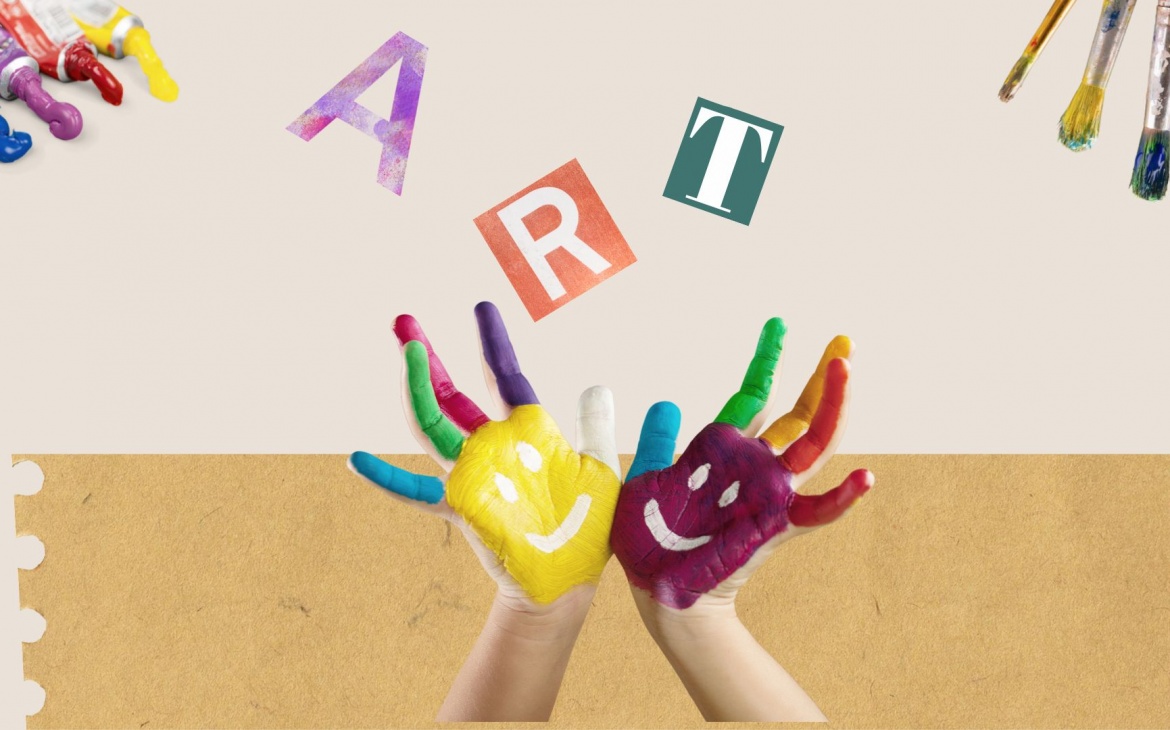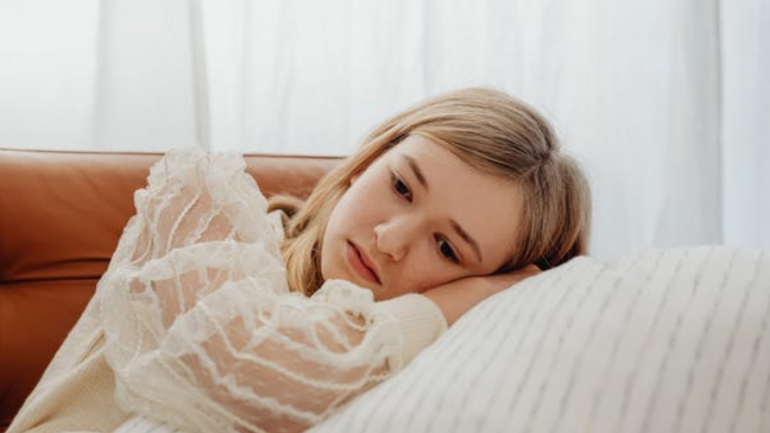This is a sample of our book, Get Your Art On! The Art-For-Wellness Facilitation Guide, which was created for educators, facilitators, and those of us working alongside the amazing youth in our community.
The goal is to provide an inclusive space, to allow for self-discovery, self-reflection, confidence and exploration of personal creativity. This book is meant as a tool to deal with the stress and challenges that will inevitably come into our lives.
If you would like to learn more about it, or purchase the book, please email us at
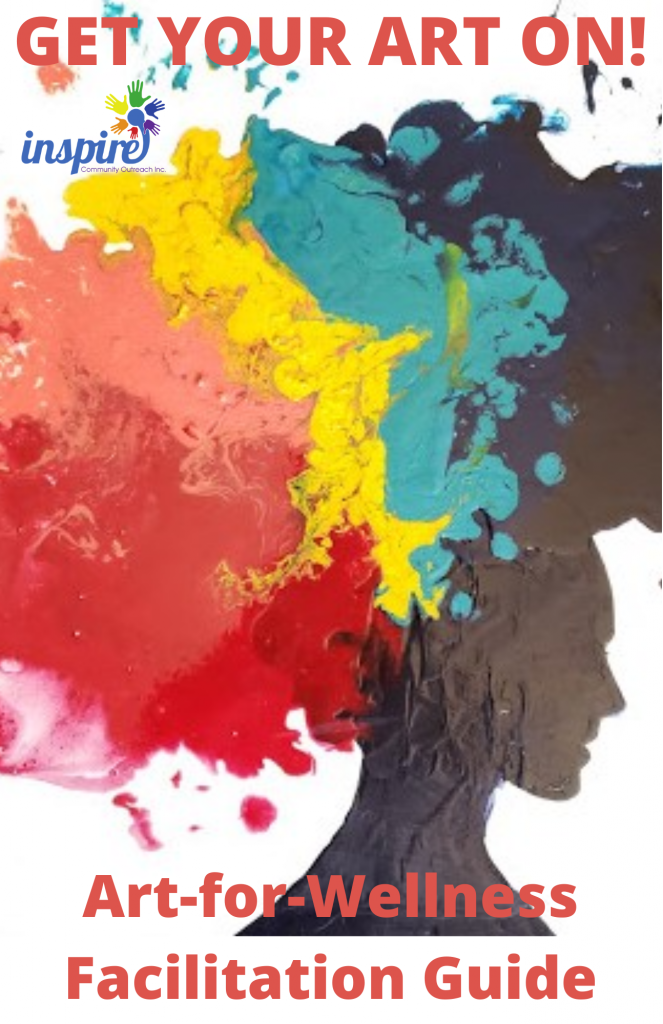
Sample of Sessions from Get Your Art On!
Session 1: Self-Care
Check-in:
- Ask participants what they do for self-care and stress-relief
Objectives:
- Participants will learn what the group is about and have the opportunity to ask questions or express their feelings using a low-stress check-in method
- Participants will reflect on what they consider to be positive
- Participants will have the opportunity to work with another member of the class in a dyad relationship
- Participants will hear other’s perspectives on positivity
- Participants will reflect on their expectations of the group
Activity Description: The Art of Words: Shared View of Positive Words
- Divide the group into dyads
- Ask dyads to brainstorm words that they consider to be positive
- When the dyad groups have their words, ask them to go up to a shared word wall to paint their words together, in any style and colour (large piece of paper taped to the wall for the whole class to use)
Materials needed:
- Acrylic paint
- Paint brushes
- Wall length paper
- Tape
- Schedule of group sessions for participants
- Pieces of paper for check-in
Check-out:
- Give participants the opportunity to discuss why they chose their words for the word wall, if they feel comfortable enough to do so
- Allow the group to share any other reactions or feelings from the session
- If there are any current and relevant community resources relating to the type of art that was used during this session (or in reducing stress levels) pass this information onto the group
Session 2: Art Creation as a Way to Support Positive Emotions
Check-in:
- Ask participants to share their favorite song or musical artist and explain why
- Show techniques on how we can use pastels
Objectives:
Activity Description: Music and Art Creation

- Participants will reflect on the art process of using pastels during each song
- Participants will reflect on the emotions that they felt during each song
- Participants will reflect on how the art process affected/changed their emotions
Create art with pastels, to the sound of music.
- Ask participants to listen to each song and draw freely using pastels as they are listening
- A different piece of paper will be used for each song for comparison purposes
Materials needed:
- 5 songs to play for the group; 1 country, 1 blues, 1 upbeat pop, 1 classical, 1 rock
- Pastels
- Art paper
- Music player and/or speakers
Check-out:
- Ask participants to select which piece of art meant the most to them
- Ask participants to explain which song inspired their art and what they were feeling during the art process
- If there are any current and relevant community resources relating to the type of art that was used during this session (or in reducing stress levels) pass this information onto the group
Session 3: Identifying Stressors
Check-in:
- Provide a handout to participants with multiple emotions and feelings
- Have the group select one that they are feeling in this moment (or come up with their own)
- Have participants share their choice with the group if they feel comfortable
Objectives:
- Participants will reflect on their emotions, both before and after the activity
- Participants will learn how art inspired by their life events can affect their emotions and stress level
- Participants will reflect on significant stages in their life
- Participants will reflect on their school environment and their environment outside of school in hopes of identifying possible causes of stress
Activity Description: Paint the Stress! Identifying and painting our life’s stressors.
- Instruct participants to divide their poster paper into four squares
- Explain that they will be painting four stages in their life (Significant, negative or positive)
- Explain that this can be done in an abstract or detailed manner
Materials needed:
- Acrylic paint
- Paint brushes
- Poster board paper for each member
- Tape
- Feeling/emotion handout for check-in
Check-out:
- Provide time for participants to share what their emotions are after the activity. Ask participants if they felt a decrease in stress level during the art activity
- Give participants time to share their life stages and why they chose those points in their life (if they would like to)
- If there are any current and relevant community resources relating to the type of art that was used during this session (or in reducing stress levels) pass this information onto the group
Session 4: Using Focus to Relieve Stress
Check-in:
- Invite participants to share a way they relieve stress
Objectives:
- Participants will relieve stress with a focused artistic technique
- Participants will reflect on how this method relieves stress and use it in their daily lives
- Participants will have the opportunity to reflect and ask any anonymous questions or concerns that they may have in the check-in activity (as this is the mid-way point)
Activity Description: Mandala Drawings Creation and colouring of mandalas.
- Show participants examples of Mandala drawings and ask if anyone has seen these before and if they know the process involved
- Demonstrate the process for creation of a Mandala drawing
- Explain to participants that they can create their own Mandala drawing or colour a printed one
Materials needed:
- Pencils and fine tip markers
- Art paper
- Mandala drawings
Check-out:
- Ask participants how they felt while experimenting with this technique and if there is anything similar that they have done to help relieve stress
- If there are any current and relevant community resources relating to the type of art that was used during this session, or in reducing stress levels, pass this information onto the group
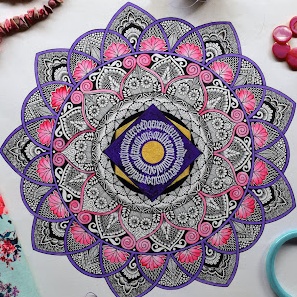
Session 5: Goal Setting and Reflection
Check-in:
- Invite participants to share a goal they have for their life
Objectives:
- Participants will express themselves through writing in a safe environment as no one else will be reading it
Activity Description: Dear Self… Writing a letter to ourselves
- Ask participants to write themselves a letter
- Explain that the letter can address anything they would like to reflect on or tell themselves. This could be setting goals, reflecting on their experiences in the sessions (or their lives in general), their successes or failures, stresses and stress relievers or anything else they would like to write to themselves
- Ask participants to put the letter in an envelope to keep, or seal it and open at a later date
Materials needed:
- Loose leaf
- Envelopes
- Pens
- Pencils
Check-out:
- Ask the group to share how they felt during this writing activity; was it stressful, was it relaxing, did they come to any conclusions?
- If there are any current and relevant community resources relating to the type of art that was used during this session, or in reducing stress levels, pass this information onto the group
Session 6: Maintaining Good Health
Check-in:
- Ask the group what they do to maintain good health. Examples: sleep, exercising daily, listening to music, eating well, self-care, etc.
Objectives:
- For participants to discover that creating art has a therapeutic effect
- For participants to pair what makes them feel healthy with a positive artistic outlet for the purpose of stress-reduction
Activity Description: Exploring What Makes Us Feel GREAT! Drawing Activity:
- Have a group leader discuss various drawing styles, and provide examples
- Have participants draw their favourite things that help them feel good
Materials needed:
- Pencils
- Pencil Crayons
- Sketch Paper
Check-out:
- Ask the group if they have noticed a relationship between the act of art making and stress and negative moods
- If there are any current and relevant community resources relating to the type of art that was used during this session, or in reducing stress levels, pass this information onto the group
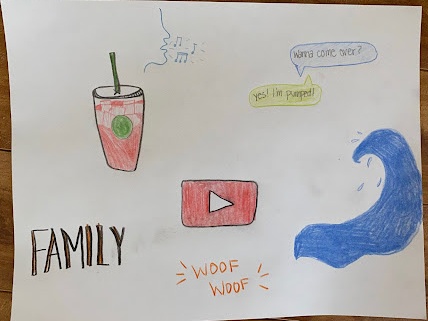
Session 7: Positive Life Experiences through Art
Check-in:
- Provide a handout to participants with various emotions and feelings listed
- Have the group individually select one that they are feeling at that moment or come up with their own
- Have participants share their selection with the group if they feel comfortable doing so
Objectives:
- For participants to obtain an additional method for practical artistic self-expression
- Participants will reflect on their emotions of the day- both before and after the activity
- Participants will learn how art inspired by their life events can affect their emotions and stress level
Activity Description: Images and the Representation of HAPPY
Art Project:
- Have participants cut images from photography books and magazines to represent things that make them feel good and help to reduce stress. Arrange on a canvas and coat with modge podge.
Materials needed:
- Modge Podge
- 8×10 or 11×14 inch canvases, or use paper
- Magazines and photography books
- Scissors
Check-out:
- Provide time for participants to share what their emotions are after the activity. Ask participants if they felt a decrease in stress level during the art activity
- If there are any current and relevant community resources relating to the type of art that was used during this session, or in reducing stress levels, pass this information onto the group
Session 8: Perspectives, Strengths and Talents
Check-in:
- Invite participants to share what they feel one of their strengths are.
Objectives:
- For participants to discover that they have different strengths, talents, views and perspectives to share with others
- For participants to learn a new artistic coping strategy for stress reduction
Activity Description: How Do You See It?
Drawing project:
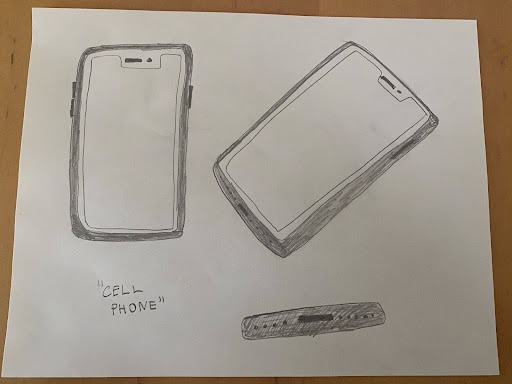
- Have members of the group draw an object in the room from different perspectives.
- Members of the group will have different drawings to share based on different talents and perspectives
Materials needed:
- Variety of pencils
- Blending stumps, erasers, etc.
- Paper
Check-out:
- Ask the group if they felt more positive or if they noticed a decrease in stress throughout the art activity
- If there are any current and relevant community resources relating to the type of art that was used during this session, or in reducing stress levels, pass this information onto the group
Session 9: Moods, Thoughts and the Power to Impact Them
Check-in:
- Invite participants to explore what kind of mood they are in today.
Objectives:
- For participants to discover that our thoughts interact with our moods.
- For participants to learn that by identifying negative thought patterns and challenging them, you can minimize the negative impact of low moods.
- Moods are not a permanent state, and it is possible to interact with them and change them.
Activity Description: Mood Heroes
Drawing project:
- Have members of the group identify their mood.
- Have them write the name of their mood on a sheet of paper. Then, have them draw that mood as a character (ex. A Comic Book Hero, or Villain).
- Ask participants to come up with an origin story for their character that explains what thoughts went into creating their current mood.
- Have participants write a challenge to negative thoughts, and show them that by shifting their perspectives, they can impact their moods.
- Ask if they can think of anything that their characters might need to feel better (i.e. Explore self-care concepts.)
Materials needed:
- Variety of pencils
- Markers, erasers, etc.
- Paper, tracing paper
- Superhero references
Check-out:
- Ask the group if they felt a decrease in stress when thinking about the potential future “low” moods.
- Remind participants that they can check in with themselves every day and become more aware of their moods.
- By challenging any negative thought patterns they can start to improve their moods, or at least minimize their impact.
- The first step is always checking in and becoming aware of our moods and thoughts behind them.
- If there are any current and relevant community resources relating to the type of art that was used during this session, or in reducing stress levels, pass this information onto the group.
Session 10: Let it Out!
Check-in:
- Invite participants to brainstorm different ways that they let out their feelings.
Objectives:
- For participants to actively make space to express their emotions and thoughts.
- For participants to learn that by giving emotions an outlet, they are less likely to get out of control.
- By practicing this exercise, participants create a plan that consists of healthy outlets for emotion.
Activity Description: Let it out! Mixed Media Project:
- Have participants write down all the emotions they were feeling this week on little slips of paper. Have them put them into a large bottle and close the lid (Ex. Gatorade bottles with large mouths).
- Ask participants how they can get rid of these feelings and allow them to pass.
- It is impossible to let the feelings pass without letting them out of the bottle.
- Brainstorm a variety of ways to express emotions- focusing on the positive coping strategies and troubleshooting the negative ones. Examples include; listening to loud music, journaling or writing poetry, painting in expressive colors, talking to a friend, etc. The point is to allow them to make a connection to giving these feelings a voice.
- Ask participants to take their “feelings” out of their bottles and give them a voice.
- Allow them to arrange their feelings as part of a journaling poem; in an expressively colored painting, as text boxes for a comic strip; or as background in a water color piece.
Materials needed:
- Variety of pencils, markers, erasers, etc.
- Paper, journaling sheets, canvas
- Paint, brushes, water
- White glue
- Bottles (ex. Gatorade)
- Strips of paper
Check-out:
- Ask the group if the feelings they came in with feel as intense now, or if they have become smaller once we let them out and gave them a voice.
- Challenge participants to choose one feeling this week and practice the project at home to “give it a voice”.
- Remind participants that by giving their feelings a voice they can reduce their intensity.
- If there are any current and relevant community resources relating to the type of art that was used during this session, or in reducing stress levels, pass this information onto the group.
